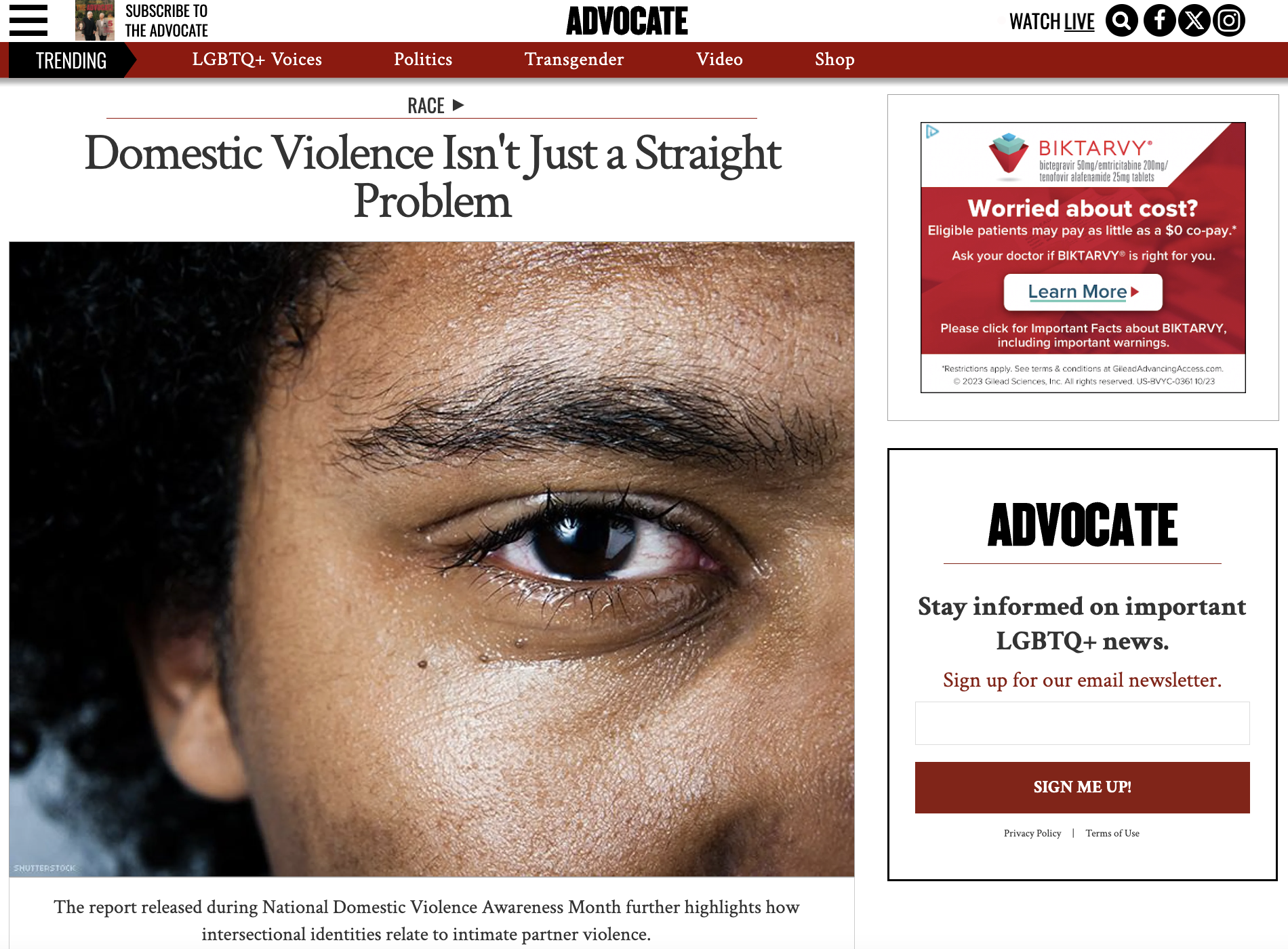
(For Advocate.com/by Orie Givens) Intimate partner violence is definitely an LGBT problem, and for LGBT people, identity plays a part in the violence they face in relationships. The group responsible for collecting data on LGBT intimate partner violence thinks that identity markers like race, gender identity. and disability status also play a key role.
“We know that LGBTQ people of color experience higher rates of housing discrimination and job discrimination…these vulnerabilities make them more likely to experience intimate partner violence,” Emily Waters, senior manager of research and policy at the National Coalition of Anti-Violence Programs, tells The Advocate via phone.
The network of nationwide service providers released its somber annual report Tuesday, compiling the instances of intimate partner violence reported by LGBT people in 2015. Though there were fewer instances of violence reported, the data indicates there is still a higher than normal risk for people who are LGBT, especially if they hold other marginalized identities.
The 2015 Report on Lesbian, Gay, Bisexual, Transgender, Queer and HIV-Affected Intimate Partner Violence highlighted physical and psychological trauma experienced by LGBT people across the country. The report also shows that marginalized groups, like people of color, transgender people, and people with disabilities have an increased risk for violence in romantic relations.
Additionally, the report found discrepancies in services available for LGBT survivors. Despite the Violence Against Women Act being reauthorized in 2013 to with a proviion to prevent discrimination based on sexual orientation or gender identity, the reality is less affirming.
“We know that LGBTQ survivors across the country have a really hard time accessing domestic violence resources that are affirming in their identity,” says Waters. Forty-four percent of respondents indicate being denied shelter services, and 77 percent of those say it was because of their gender identity.
Waters says that some programs still operate under the very archaic model of what intimate partner violence looks like, dealing with cisgender men as aggressors and cisgender women as victims.
“We have to start expanding our understanding of intimate partner violence, so that these kinds of unique experiences can fit into the services and the ways that we talk about intimate partner violence,” Waters says.
Another finding showed that when LGBT survivors interacted with law enforcement during incidents, nearly a third of survivors were actually arrested incorrectly, and a quarter reported police as being “indifferent or hostile.”
“We’re often trying to think about is how do we shift away from automatically assuming that people can interact or should interact with law enforcement, and what are some of the other mechanisms that we can use where survivors feel safe,” says Waters.
In total, LGBT survivors reported 1,976 incidents of intimate partner violence last year to 17 NCAVP member organizations from 14 states across the country. Violence reported includes not only physical acts but emotional, psychological, and financial ones, such as threats, intimidation, isolation, stalking, or verbal harassment.
